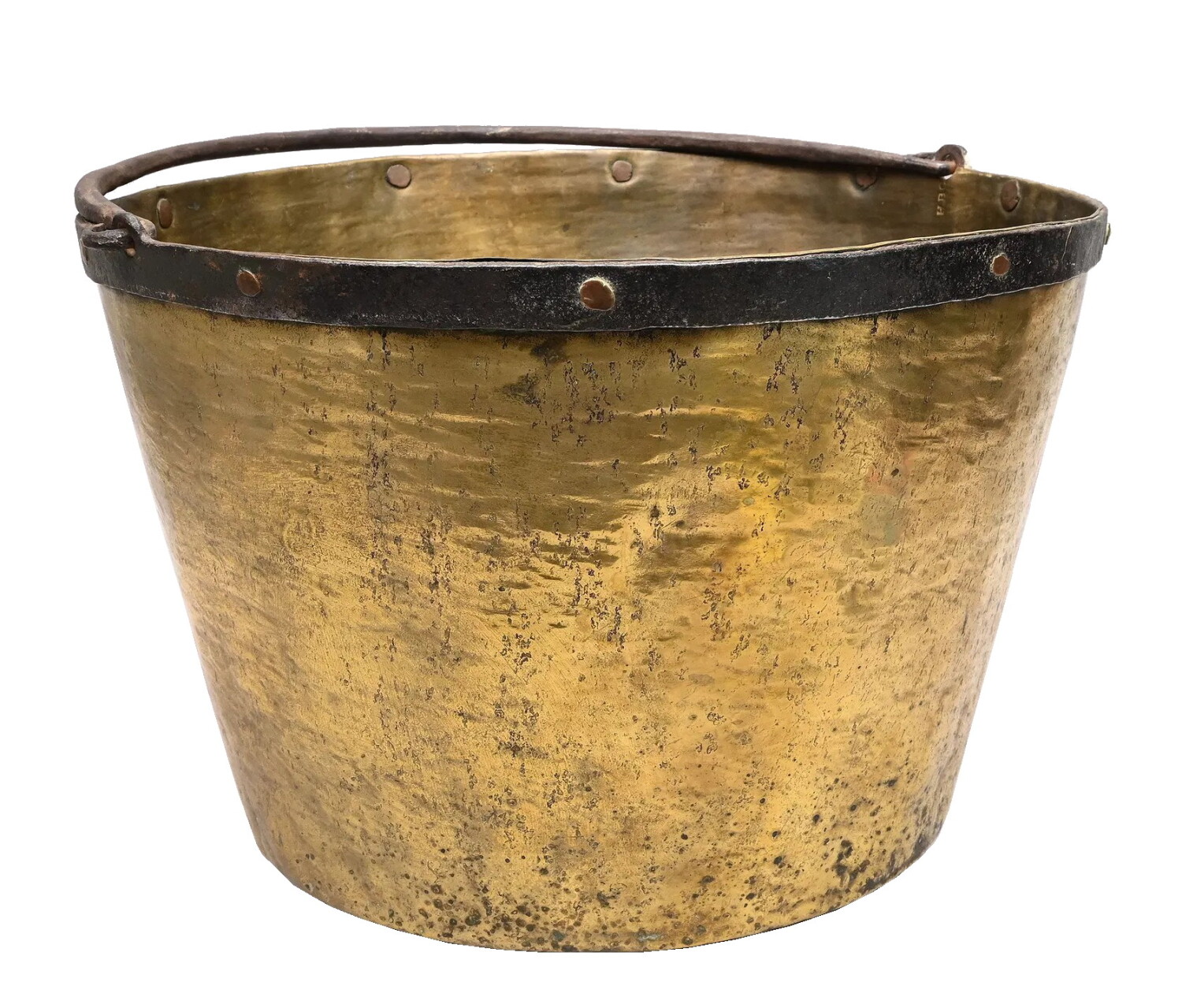
| |
EXCEPTIONAL HAND-FORGED BRASS KETTLE, MADE & SIGNED circa 1800-1820 BY THE HUDSON’S BAY COMPANY, WHICH HELD A DEFACTO MONOPOLY OVER THE NORTH AMERICAN FUR TRADE FROM APPROXIMATELY 1670-1869; THIS EXAMPLE OF A TYPE TRADED WITH NATIVE AMERICANS FOR FURS |
| |
|
| Dimensions (inches): |
12.5" tall x 18.5" diameter |
| Description: |
|
Hand-forged brass kettle with a blacksmith-made, iron rattail swing handle and an iron banded rim, hand-pined with copper rivets. Letters stamped on the interior, below the rim, read: “HBC.” This is the mark of the Hudson’s Bay Company, which traded metal goods such as this with Native Americans from the 18th-the mid-19th century. Made circa 1800-1820, this exceptional example exhibits both great color and beautiful patina.
According to the Smithsonian’s National Museum of American History, “In the early 18th century one beaver belt could be exchanged for one 3-quart brass kettle [and] by the early 19th century that price had risen to around 6 beaver pelts… Metal goods were prized by traders—after a kettle could no longer be used to cook, it was repurposed by into projectile points or knives.” *
Brief History of the Hudson’s Bay Co.
The Hudson’s Bay Company (HBC) was founded in 1670 by royal decree of King Charles II, who granted the pseudo-governmental entity, incorporated by English Royal Charter, the right of ‘sole trade and commerce’ over an expansive territory known as “Rupert's Land.” The territory comprised much of the Hudson Bay drainage basin, encompassing much of modern-day Canada and extending into the northern part of British-controlled colonial America, the southern border of which was not specifically defined. The manner in which the charter was established allowed the HBC to function as a de facto government for nearly 200 years, creating a commercial monopoly in much of North America. It lay claim to the work of both colonization of the region and nation-building, mapping the interior of British Columbia and charting the Arctic coast, almost always with the help of native guides. At its peak, the company controlled the fur trade throughout the region, trading heavily with native tribes and establishing trading posts. Monopoly control ended in 1868-69, when the 1670 charter was sold to Canada for approximately $1.5 million, losing out to an American bid of $6 million, spearheaded by Minnesota Senator Alexander Ramsey. The Canadian deal allowed the firm to retain 5% of the land plus title to various retail establishments. By the mid-19th century these had evolved from trading posts into a mercantile business with shops and eventually department stores. Still in business today, these eventually would include Saks and Neiman Marcus.
Condition: In addition to expected wear, there is a small, expertly patched hole.
* Source: https://americanhistory.si.edu/collections/object/nmah_308500 |
|
|
| |
|
| Primary Color: |
brass |
|
| Earliest Date: |
1800 |
|
| Latest Date: |
1820 |
|
| For Sale Status: |
Sold |
|
| Price |
SOLD |
|
| E-mail: |
info@jeffbridgman.com |
|
 |
|
Page Views:... 775 |
|


